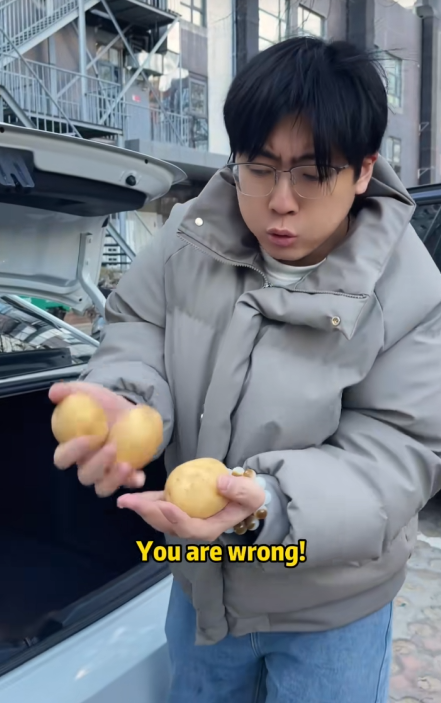
At first glance, the title “Do you know the role of potatoes in cars?” might seem humorous or confusing. After all, cars are made of metal, plastic, rubber, and electronics—so how could a humble root vegetable like the potato play any role in the automotive world? As surprising as it may sound, potatoes have made their way into several aspects of automotive technology, innovation, and even education. Let’s peel back the layers of this unusual connection.
1. Potatoes and Electricity: The Science Experiment That Sparked Curiosity
One of the most common associations between potatoes and technology comes from the classic school science experiment—creating a potato battery. In this experiment, inserting two different types of metal (typically copper and zinc) into a potato creates a chemical reaction that generates a small electric current. This simple setup demonstrates the principles of electrochemistry, and while a single potato won’t power a car, the experiment has inspired creative thinking around natural sources of energy.
In fact, this basic concept is part of broader educational efforts to get students thinking about alternative energy and how seemingly everyday items can produce electricity. The potato battery has inspired eco-conscious thinkers and even spurred university-level research into bio-batteries—devices that generate electricity from organic materials.

2. Bioplastics: Turning Potatoes into Car Parts
In recent years, environmental concerns have pushed the automotive industry toward greener materials. One promising area is bioplastics, which are plastics made from renewable sources like corn, sugarcane, and—you guessed it—potatoes.
Potato starch can be processed into a biodegradable plastic substitute. This material is increasingly used in packaging, but researchers and manufacturers are also exploring its use in automotive interiors such as dashboard trims, seat padding, and insulation. These bioplastics offer a sustainable alternative to petroleum-based plastics and decompose much more quickly after disposal.
Car companies focused on sustainability, such as Tesla, BMW, and Toyota, have been exploring bioplastic components as part of their eco-friendly initiatives. While potato-derived plastics are not yet standard in all cars, they are part of a growing trend toward green manufacturing in the automotive world.
3. Ethanol and Alternative Fuels: Could Potatoes Power Your Engine?
Another surprising link between potatoes and cars lies in alternative fuels. Ethanol, a type of alcohol often blended with gasoline, can be produced from various plant sources—including potatoes. Although corn and sugarcane are more commonly used, potatoes are rich in starch, which can be fermented into ethanol.
In countries where potatoes are abundant, they have been considered as a biofuel source. For example, in parts of Eastern Europe and South America, studies have looked into using waste or surplus potatoes to create ethanol for vehicle fuel.
While large-scale potato-to-fuel production is still limited due to cost and availability, the concept demonstrates the flexibility of biofuels. Imagine a future where your leftover mashed potatoes help power your hybrid vehicle—what a tasty solution to the fossil fuel crisis!

4. Potato Chips and Car Troubles: A Popular Urban Legend
There’s also a strange urban legend that connects potatoes to car exhaust systems. Some pranksters claim that inserting a potato into a car’s exhaust pipe will prevent it from starting. While this “trick” might sound like a harmless joke, it’s not just untrue—it’s also potentially dangerous.
In reality, most modern vehicles will still start, or the potato will be ejected by the pressure. However, attempting this could damage the exhaust system or pose safety risks, so it’s never recommended. This odd myth shows that potatoes and cars have long shared a quirky relationship—even if only in folklore and mischief.
5. Anti-Fog Hack: Rubbing Potatoes on Windshields
Another lesser-known yet surprisingly effective use of potatoes involves windshield care. Some drivers swear by a home remedy: cutting a potato in half and rubbing the raw side against the inside of the windshield. The starch from the potato creates a barrier that helps prevent fog from forming.
This tip, popular among budget-conscious drivers and DIY enthusiasts, takes advantage of the potato’s natural compounds. While it’s not a replacement for commercial defogging products, it’s a neat trick in a pinch—especially on a cold or humid day.
6. A Symbol of Innovation and Humor
The potato has also found its place in automotive culture and humor. In media and marketing, potatoes are often used to symbolize durability, modesty, or unconventional ideas. For example, several DIY YouTubers have tried to use potatoes to charge batteries or even claim to start cars, often as stunts or experiments to entertain and inform.
In some car forums, drivers even joke about “potato engines” when referring to vehicles that are sluggish, underpowered, or struggling. This kind of lighthearted humor reflects how embedded the potato is in human culture—even in the automotive sphere.

7. Potato Waste as Industrial Biomass
Beyond the novelty and experiments, potato waste has industrial potential. Potato peels and scraps from food production can be converted into biomass—a renewable energy source. Biomass energy is increasingly used in manufacturing facilities, including automotive plants, to provide heat or power in an eco-friendly way.
Some forward-thinking automotive companies are incorporating biomass energy into their operations to lower carbon footprints. While they might not exclusively use potato biomass, it’s part of a larger movement toward circular economies—where waste is repurposed instead of discarded.
8. Future Possibilities: Potatoes in Battery Tech?
Scientists are continuously researching new ways to use natural materials in advanced technologies. One area of exploration is the use of organic materials in battery technology. Some studies suggest that potato starch and other components might one day play a role in improving battery efficiency or sustainability.
If these innovations come to life, potatoes could help make electric car batteries cheaper, more environmentally friendly, and easier to recycle. While these developments are still in early stages, the potential is promising.

Conclusion: More Than Just a Side Dish
While it might seem silly at first, the potato has a surprisingly diverse and meaningful connection to the automotive world. From educational experiments and sustainable plastics to biofuels and quirky windshield hacks, potatoes have proven their value beyond the dinner plate.
As the auto industry continues to embrace sustainability and innovation, who knows what role potatoes might play in the cars of tomorrow? So the next time you see a potato, you might just see a small but powerful reminder that innovation can come from the most unexpected places—even something as simple as a spud.



